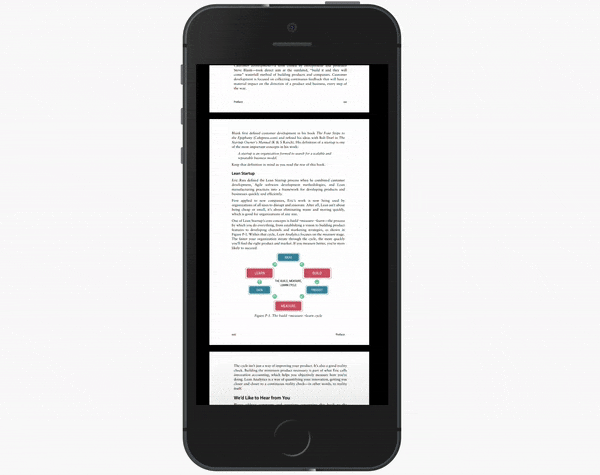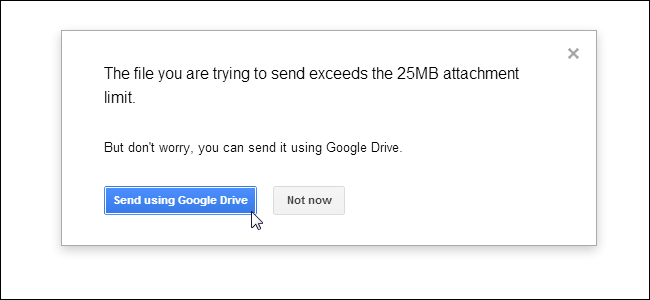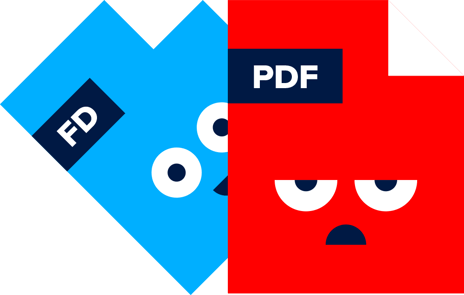PDFs, or PDF files have been with us for a long time. They're certainly useful for some things, but it’s important to understand their limitations.
When should you use a PDF? Well, PDF files are perfect for saving a digital receipt when you buy something online or for creating a document to send to your printer.
But PDFs have many downsides as well.
For digital business content — like eBooks, proposals, white papers, ABM assets, etc. — that you intend to share, it's high time to switch to a format that takes modern requirements like measurability and responsiveness into consideration.
According to SalesForce, 84 percent of buyers believe the experience a company provides is just as important as its products and services. And there's no arguing with the fact that the content you produce is a major part of how any customer experiences your brand.
Yet relatively few companies pay much attention to their content experience, preferring instead to cling to what they know — like legacy file formats like PDFs.
Granted, adopting new technology can be daunting. But this post will provide a clear and compelling argument for why the world must move past PDFs and legacy file formats once and for all.
There's a lot to gain by doing so.
The problems with using PDF for business content
Adobe introduced the PDF file format in 1993 — more than a quarter century ago!
PDF is an abbreviation for portable document format, and there’s a reason why they’re named as such.
Their strength lies in the fact that they work with any operating system. For the first time ever, Windows and Mac users could exchange documents and read them without worrying about compatibility.
And PDFs and PDF files are fixed-layout documents, meaning that regardless of what device, operating system, or screen size a reader uses, a PDF always renders exactly the same.
Herein, however, lies one of the PDF's greatest downsides.
Problem 1: PDFs are not mobile-friendly
The fixed layout of PDF files means that documents designed for desktop or print will be extremely difficult to use on a mobile device, requiring zooming in and panning around.
This is a huge user experience issue and can cause major headaches for your readers. In the mobile-first age, your audience doesn’t want the hassle of looking at something that doesn’t fit their screens.
Just look at the image below, and you'll see what I mean.

Reading a Business PDF on a mobile device
Problem 2: PDF files require multiple steps to access
Because they're offline documents, PDFs require you to download them before viewing.
This is already a barrier for desktop users, but for mobile users, downloading PDF files remains an almost alien task requiring a file manager app and a 3rd party PDF viewer.
In a world where every ounce of friction equals lost opportunities, these extra steps can lead many users to abandon your content before even beginning.
If your goal is for your audience to engage with your content, you need to make accessing it easy with as few steps as possible. This means using a format that doesn't require the user to leave his or her browser.
Problem 3: You can’t track reader engagement in a PDF file
PDFs completely lack the ability to collect data. You may be able to see how many times a PDF was downloaded from a landing page, but you have no idea what people did with it afterward.
You can't see how much of it people read or how long they engaged with it.
You can't see which pages and topics people found interesting.
You can't see which links they clicked on.
You don't even know if people read it or just left it in their downloads folder!
Using PDFs or PDF files for business content introduces a massive black hole in your customer journey data — a blank space where you have zero intelligence.
This is highly problematic for at least two reasons: First because you're clueless about whether your content actually performs, you're unable to improve or optimize it.
Second, because you can't see how your readers engage with the content, you cannot implement any kind of lead scoring or personalized follow-up.
People who opened it nine times and read every page will end up in the same "engagement bucket" as those who downloaded it but never read it.
In a world where every marketing action must be measurable, you simply can't afford to use a format you can't track.
Related: How to track white paper user engagement.
Problem 4: PDFs are static, boring, and don’t let you embed multimedia
Content overload is a real problem. Today, only the most aesthetically pleasing, well-produced content will get through to your readers.
And this is increasingly true in the B2B world as well, where business buying habits are becoming more and more similar to at-home consumer habits. According to IBM, 80% of B2B buyers now expect the same buying experience as B2C customers.
When designing content in a PDF file format, you can include images and hyperlinks, but that's as far as it goes. A for aesthetics, they may be nicely laid out in InDesign, but this is of little value unless you intend to create printed material.
When your audience consumes content on their phones or behind their desks, those design choices may become hindrances.
Today's audiences prefer visually immersive, snackable content. They want video and bite-sized bits of information. They expect interactive, personalized content experiences that are easy to digest.
PDFs are simply not up for the task.
Problem 5: PDFs are difficult to share
When people find interesting content they think would be valuable to others, they often share it on platforms like Twitter, Facebook, and LinkedIn. Social sharing has made it possible for companies to get their content in front of enormous numbers of people.
If your business content is in a PDF, however, you forgo this opportunity.
Sure, you may have some readers who email your PDF to a few colleagues — assuming the file is not too large, in which case they may have to resort to third-party file-sharing services like WeTransfer — but you'll never achieve the kind of exponential growth possible with online content.

Imprisoning your content in a PDF will prevent it from being discoverable on social media and reaching new audiences.
Problem 6: You can't control distribution or circulation with PDF files
Once a PDF has been sent, downloaded, or shared, you lose all control over it. This is problematic for at least three reasons.
First, if you've distributed fact sheets, white papers, eBooks, brochures, and other PDF content via landing pages or email — and then something changes, like your pricing model, your contact info, or the name of your business — you have a problem.
There's no way to update PDFs after you've distributed them. There's no way to recall them. There's no way to even know how many of them are in circulation.
Second, if you send a PDF with private or sensitive information, like a proposal, there's no way for you to ensure those documents aren't forwarded or shared with someone else who shouldn't see them.
Finally, if you gate PDFs behind a form on a landing page for lead generation, you have to remember that those PDFs can then be freely shared. There's no way to track pass-along. Others may well benefit from the content you've produced, but they'll do so without giving you their info.
Discover: The sad reality of animated PDFs
So is there a PDF alternative?
The future of PDF looks bleak.
When creating digital content, you should always put your audience first. Taking an audience-centric approach will help you craft a content experience that will both grab their attention and leave a lasting impression.
Today's digital content consumers are hungry for content that's:
- Mobile-friendly and accessible anywhere
- Engaging and able to hold their attention
- Highly-visual and aesthetically pleasing
- Snackable and easy to digest
- Interactive and personalized
Clearly, PDF doesn't cover these criteria.
Thankfully, it's not the only format for around!
Many progressive brands are switching away from PDF and are using online content experiences to fuel their customer journeys.
This type of content comes with all the advantages of modern web technology — it's responsive, it can incorporate rich media, it's fully measurable, and it can be highly interactive and personal.
Online content experiences can be used for any type of marketing collateral including brochures, proposals, ABM assets, buyer enablement material, presentations, white papers, annual reports, and much more.

While they're powered with web technology, they don't necessarily live on your website. They can be given unique URLs so they're easy to find and share — or, alternatively, they can be made highly secure using numerous types of online encryption and authentication. And they can be updated retroactively.
They can be used in combination with your company's martech stack to gain detailed engagement insights and even follow up with individual leads based on what pages they read.
Conclusion
Modern content formats make it possible for companies to create immersive content that’s both measurable and looks great on any device.
The interactivity that's possible with web-based content will help you stand out in ways you never thought possible.
We’ve come a long way since PDF first came around, and modern audiences have changed significantly.



